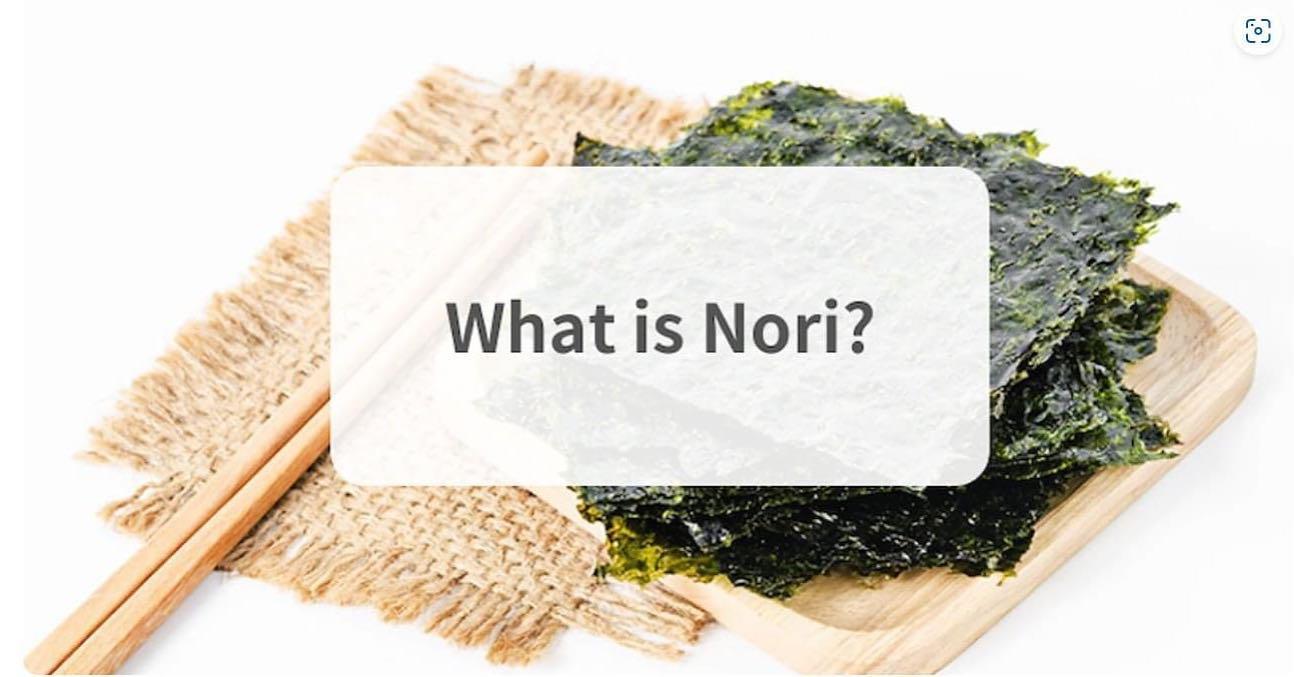Japan | Interesting Facts | What Is Nori
What Is Nori
A Look at Japan's favourite SEAWEED...
A lot of Asian food involves Nori - an edible seaweed. I know that the term seaweed puts you off but hear us out. When you think of Japanese cuisine, sushi, and ramen probably come to mind. But did you know that one of the key ingredients for these meals is Nori? While it may still have the unseemly green look you see in animations, it tastes quite nice.
Nori has been a staple in Japanese cuisine for centuries, and it's not just used in sushi and ramen. From miso soup to onigiri, Nori is a versatile ingredient that adds a unique flavour and texture to many Japanese dishes. Let's take a closer look at this beloved seaweed.
Nori as a Japanese word was originally used to represent all kinds of marine plant life. Today, when someone says “Nori” it only means the seaweed that is used for cooking. It is a red algae that grows a lot in East Asia, particularly in Japan. Nori is typically dried and sold in thin, paper-like sheets and it has a distinctive flavor that is slightly salty and slightly sweet, and its texture is crispy and brittle when dry, but becomes soft and chewy when wet.
How It Is Cultivated And Harvested.
There are Nori plantations in Japan where nets are filled with red algae seeds and set up below the ocean surface. The weather has to be just right for Nori to grow that is why in commercial manufacturing, the water temperature and light is carefully controlled.
#japan #funfact #info #seaweed #food #instagood #instagram #picoftheday #saturday
The crops can grow up to 20 cm in length in 45-50 days and that’s when it is ready to be harvested. Farmers get to the seaweed nets in boats where they can harvest each crop around 4 times. You see, by cutting off the top of the seaweed and waiting for around 2 weeks before each harvest, the farmers can extend the amount of Nori they harvest before laying another fresh net of seeds.
How It Is Turned Into Sheets.
Nori processing was once a labour-intensive task back when people did it by hand. But nowadays, machines have made it very easy. It is made into sheets using the process below.
Washing: Once the Nori is harvested, it is thoroughly washed to remove any sand or debris. You don’t want to ruin your meals by picking out sea dirt.
Chopping: After washing, the Nori is minced into small pieces until it looks like a slurry.
Pressing: The Nori slurry is then pressed into thin sheets using a machine. The process removes most of the moisture from the sheets but it is still left to dry for several hours.
Drying: The drying is done in the sun or a drying room with controlled temperature and humidity. As they dry, they become crispy and brittle.
Packaging: Once the Nori sheets are completely dry, they are packaged and sold for consumption.
Storage
To get the best use of Nori, it needs to remain dry. Nori can absorb moisture from the air which can cause it to become soft and lose its crispiness. So wrap it tightly with plastic wrap or aluminium foil to minimize its exposure to air, refrigerate it, place it in an airtight container, or just simply store it in a cool dry place.
Chopping: After washing, the Nori is minced into small pieces until it looks like a slurry.
Pressing: The Nori slurry is then pressed into thin sheets using a machine. The process removes most of the moisture from the sheets but it is still left to dry for several hours.
Drying: The drying is done in the sun or a drying room with controlled temperature and humidity. As they dry, they become crispy and brittle.
Packaging: Once the Nori sheets are completely dry, they are packaged and sold for consumption.
Storage
To get the best use of Nori, it needs to remain dry. Nori can absorb moisture from the air which can cause it to become soft and lose its crispiness. So wrap it tightly with plastic wrap or aluminium foil to minimize its exposure to air, refrigerate it, place it in an airtight container, or just simply store it in a cool dry place.
